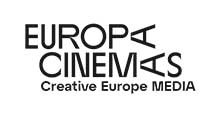Movie
CORPUS

An experimental film using a mixture of techniques to portray the different views of the human body. It consists of seven parts, each one presenting an ideotype of the human body, from the beginning of civilization up to the present time. The body as a concept or dogma is simply the embodied reflection of every civilization, upon which man himself is established.
The anthropomorphism that characterizes the sum total of perception, in a clear or latent state, comes from the fact that the human body, as reality, idea and expression, comprises the ultimate reference. The parts:
1) ARCHETYPES - ARCHETYPA. It refers to the primal expressions of the human body during the early phase of civilization that is characterized by the symbiotic relation between man and the animal kingdom. The representations come, mostly, from the prehistoric cave paintings, as well as more recent ones (carved with stone tools), which are found in many parts of the world and in large concentrations in Namibia (Africa) and on the mountain Valcamonica (Italy), but far and wide too, as well as in Greece: Pangaion Mountain, Euboea, Asfendos in Sfakia (carved by Kydones) etc. Most of the representations are unrecorded.
2) THE LOST BODY – CORPUS PERDITUM
In this case, the view of the body is characterized by an obsessive, privative perception of the body that Christianity introduced, having as its basic characteristic the negation of its corporality and, consequently, inhibition. “At the thought of my body I feel ashamed”, Saint Augustine (354 – 430) used to say, while Peter Bruegel, the elder (1525 – 1569) rendered the body as a nightmarish purgatory.
3) THE WORKSHOP OF THE HUMAN BODY – DE HUMANI CORPORIS FABRICA
The renaissance perception is that every physical entity is a mechanism articulated by parts with a responsive relation between them and which contribute to its function (as a mechanism), was fully realized in the work of the Belgian anatomist Andrea Vesalius (1514 – 1564). This work, with the characteristic title, De Humani Corporis Fabrica, was exemplarily illustrated with the help of Titian’s students, Johann Stephan von Kalkar and Domenico Campagnola, and was first published in Basel in 1543.
4) THE CITY – URBS
This is about the relation of the human body with the entirely artificial environment of the innovative (industrial) city. Here the human body is one element of a wider mechanism (of the city) and component of an unprecedented mass of humanity that the great Belgian (Flemish) engraver Frans Masereel (1889 – 1972) stamped with the new conditions of being and function of the human body, as it evolved within the altogether artificial environment of the metropolitan city.
5) ICARIAN DREAM – SOMNIUM ICARIUM
This concerns the fantastical possibilities of the body’s expansion. More specific reference is made to the myth of Icarus, but through the prism of another time (the early 20th century), where the dream of flying was indeed rendered possible with the help of machines. The visual material comes from the industrial gravures that have been joined in a panorama, which the eye can traverse without stopping (duration: twelve minutes).
6) BLOOD - SANGUIS
The vague and yet powerful mythology of blood is rendered in an abstract and ideographic way, based on the fact that blood is an element which transcends physical individuality, with the possibility to join as well as to distinguish human beings. The visual material comes from schematizations of finger prints, and with multiple movements it presents the unreeled circles of blood in perpetuity.
7) X-RAY- RADIOGRAPHIA
Here we have the contemporary technique of depicting the human body through radio-isotopes. In this part it is absolute clear that every representation (including that of the human body) depends on a given technical ability that is analogous to the specific era, and through it the anticipated image is received (in this instance, for medical-diagnostic purposes).
- Production Year 1979
- Color COLOR
- Audio SOUND
- Genre FEATURE FILM, EXPERIMENTAL
- Director RENTZIS THANASIS
- Production STEFI FILMS
- Producer RENTZIS THANASIS
- Script Writer RENTZIS THANASIS, ANGELI GKAII
- Directors of Cinematography PIETRA VITTORIO, PAPAGEORGAKOPOULOS ILIAS
- Editing RENTZIS THANASIS
- Sound Engineers SMPOUNIAS GIANNIS, SIFAKI IOANNA, METALLINOS TASOS
- Narrator TZOUMAS KONSTANTINOS
- Assistant Director BOULMETIS TASOS
- Production Manager KATSOUFIS VASILIS
- Assistant Production Manager - Provisor ANGELI GKAII
- Camera man PAPAGEORGAKOPOULOS ILIAS, VERNIKOS DIMITRIS, RENTZIS THANASIS
THESSALONIKI INTERNATIONAL FILM FESTIVAL (20th)
HONORARY DISTINCTION
THESSALONIKI 1979
ATHENS UNION OF FILM CRITICS
//////SPECIAL MENTION/BEST FILM ON CHILDREN//BEST FILM//HONORARY DISTINCTION//BEST FILM - ORIGINAL MUSIC//BEST ACTRESS (Nini Vosniakou, Yvoni Maltezou) - ORIGINAL SCREENPLAY - PHOTOGRAPHY - EDITING//TECHNICAL ACHIEVEMENT AWARD/
ATHENS 1979




